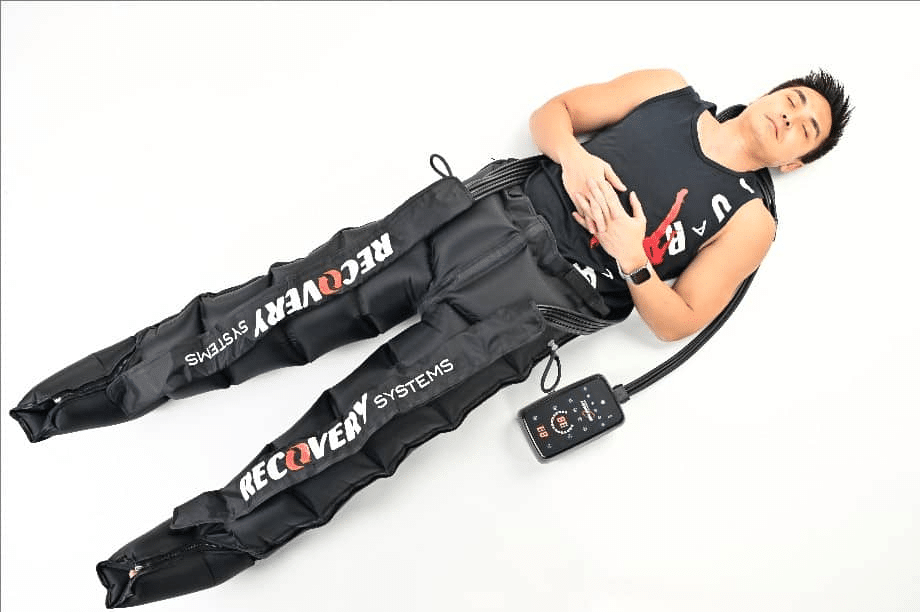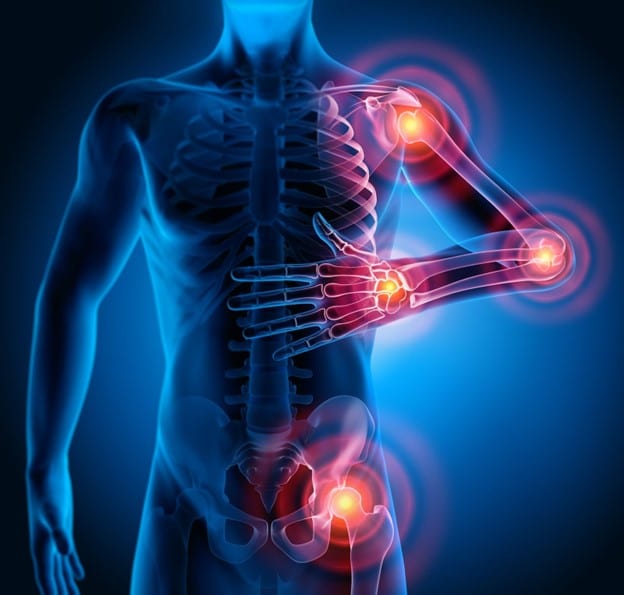
How Rest Helps Athletes Perform Better and Avoid Injury
Published:
Updated:
Athletes focus on training to improve athletic performance, but recovery is just as important. It allows the body to repair, rebuild, and strengthen between workouts. Without proper recovery strategies, athletes risk muscle soreness, fatigue, and injuries. Skipping rest can lead to burnout and decreased performance over time.
Dr. Shona Halson, an expert in athlete recovery, explains that the body doesn’t get stronger during training but during recovery. This process includes sleep, nutrition, hydration, and specific recovery methods such as compression therapy, cold water immersion, and active recovery. These techniques improve blood flow, reduce delayed onset muscle soreness (DOMS), and speed up the recovery process.
During recovery, the body adapts to training stress, replenishes muscle glycogen, and repairs muscle fibers. Without enough time, the body struggles to heal, leading to overtraining and reduced athletic performance.
Common Signs of Overtraining and When to Rest
- Persistent fatigue that doesn’t go away even with rest.
- Performance decline where workouts feel harder and endurance drops.
- Muscle soreness lasting longer than usual, signaling incomplete recovery.
- Mood changes like irritability, anxiety, or feeling unmotivated.
- Sleep problems, including trouble falling asleep or staying asleep.
When these signs appear, it’s time to step back and prioritize rest. Rest days allow the body to repair muscle damage, restore energy levels, and reduce inflammation. Ignoring these signals can lead to long-term setbacks, making it harder to bounce back. Balancing training with proper recovery ensures steady progress and helps avoid burnout.
How to Track Recovery Needs with a Training Log
Keeping a training log helps athletes identify trends in performance, fatigue, and recovery. Noting workout intensity, energy levels, and muscle soreness can highlight when adjustments are needed. A study in The Journal of Athletic Training found that athletes who monitored their recovery and adjusted training intensity accordingly had fewer injuries and improved long-term performance.
Tracking resting heart rate is another useful recovery indicator. An elevated resting heart rate upon waking can signal incomplete recovery. Researchers in The European Journal of Applied Physiology found that a consistently elevated heart rate of more than 5-7 beats per minute above baseline is a sign of overtraining.
What Are the 4 Stages of Muscle Recovery?
The recovery process happens in four key stages:
- Inflammation – After exercise, the body triggers an inflammatory response to repair muscle damage and increase blood flow to the affected area.
- Repair and Regeneration – The body rebuilds muscle fibers and replenishes energy stores using athlete recovery strategies like proper nutrition and compression garments.
- Adaptation – The muscle becomes stronger, improving its ability to handle future training sessions. This stage benefits from compression therapy to enhance athletic performance.
- Supercompensation – The muscle fully recovers, reaching a higher performance level than before. This is when the body is best prepared for intense training and competition.
What Does Recovery Do To Your Body?
When you exercise, your body experiences stress. Your muscles develop tiny tears, energy stores are depleted, and your nervous system works hard to keep up. Recovery is the period when your body repairs itself, adapts, and becomes stronger. Without enough rest, the body struggles to heal, leading to a higher risk of injuries, exhaustion, and decreased performance.
These tiny tears trigger an inflammatory response that initiates the repair process. If recovery time is insufficient, prolonged inflammation can lead to chronic muscle damage. The central nervous system also becomes fatigued from continuous activation during exercise.
Energy replenishment is another key part of the process. Exercise depletes muscle glycogen, which is the main source of energy for movement. Consuming carbohydrates immediately after training helps restore these energy levels more quickly, while proteins support muscle repair and growth. Blood flow plays a crucial role in recovery by delivering oxygen and nutrients to damaged tissues. This process varies depending on muscle fiber type, with slow-twitch fibers recovering faster due to their better ability to use oxygen.

Why Rest and Recovery Are Necessary for Athletes
Experts emphasize that recovery should be planned just as carefully as workouts. Dr. Shona Halson states that, “adaptation happens in recovery, not during training.”
Studies in Sports Medicine confirm that well-structured recovery periods allow the body to repair damaged muscle fibers, replenish energy stores, and optimize hormone levels.
The torn muscle fibers deplete energy stores (e.g., adenosine triphosphate [ATP] and phosphocreatine). It is during rest—particularly during quality sleep—that the body releases hormones such as human growth hormone (HGH) to stimulate muscle protein synthesis and repair these microtears.
Over time, this repair process leads to muscle hypertrophy (growth) and improved strength. In other words, the gains athletes see are largely the result of what happens during the recovery period rather than during the workout itself.
- Hormonal and Neurological Recovery Through Rest
Intense training elevates stress hormones like cortisol, which, if chronically high, can impair recovery and contribute to overtraining. Rest plays a role in hormone regulation and nervous system restoration. This recovery supports physical repair, reaction time, and decision-making—factors that affect athletic performance.
For example, the Sleep Foundation explains that both the quantity and quality of sleep are essential for muscle repair, mental clarity, and hormonal regulation, all of which directly influence athletic performance.
- Overtraining Prevention Through Rest
Continuous training without sufficient rest can lead to overtraining syndrome, characterized by chronic fatigue, decreased performance, and an increased risk of injury. Overworked muscles and joints are more likely to suffer strains, sprains, and overuse injuries when they have not been allowed to recover fully. Planned rest days and structured recovery sessions help prevent excessive fatigue and long-term setbacks.
The “Recovery and Performance in Sport: Consensus Statement” explains that a well-balanced recovery strategy—including proper rest—is essential to prevent negative adaptations such as non‐functional overreaching and overtraining .
- Neuromuscular Coordination and Rest
Rest supports neuromuscular recovery, allowing the central nervous system to regain its full capacity after intense training. Fatigue in the neuromuscular system can lead to compromised movement patterns, making athletes more prone to accidents and injuries. Adequate rest maintains motor control and balance, reducing the risk of missteps that could lead to strains or ligament injuries.
Types of Rest and Their Roles
- Passive Rest
Complete inactivity—such as taking a full rest day or sleeping—allows the body to initiate the healing process without additional stress. This kind of rest is particularly important after very intense training or competitions.
- Active Recovery
Light activities such as walking, yoga, or low-intensity cycling help maintain blood circulation. This increased blood flow assists in the removal of metabolic waste products (like lactic acid) from muscle tissue and delivers nutrients that facilitate repair. Active recovery can be especially useful on days between intense training sessions.
An article from UCHealth Today emphasizes that both passive rest (like sleep) and active recovery are crucial to restoring physiological and psychological balance in athletes
- Rest Between Sets
In resistance training, planned rest intervals between sets are essential. These rest periods help replenish energy stores, reduce the accumulation of metabolic byproducts, and ensure that subsequent sets are performed with optimal form and power. Longer rest intervals in power and strength training (typically 2–5 minutes) allow for more effective performance in later sets, while shorter rests (30–90 seconds) may be better for hypertrophy training.
Proper inter-set rest not only prevents premature fatigue but also reduces injury risk by allowing muscles to recover sufficiently between intense efforts.
The Secret to Peak Performance Without Burnout
Balancing training and recovery is essential for sustaining performance, preventing injuries, and avoiding burnout. Incorporating different rest strategies into a training plan helps the body heal, adapt, and build resilience over time. Below are key approaches that enhance recovery and maintain long-term athletic performance.
- Quality Sleep
Athletes are generally encouraged to obtain 7–9 hours of sleep per night. Consistent sleep patterns help regulate the body’s internal clock, improving recovery rates, cognitive performance, and overall well-being. Deep sleep stages promote muscle repair, hormone regulation, and memory consolidation—essential for athletic progress.
- Scheduled Rest Days
Incorporate full rest days into the training regimen, especially after periods of intense activity. Many elite sports teams use periodization, a structured approach that balances high-intensity training with planned rest to optimize performance and reduce the risk of overtraining. Rest days allow muscles, joints, and the nervous system to recover, ensuring sustained progress without excessive fatigue.
- Active Recovery Sessions
On days when complete rest isn’t possible, incorporate active recovery strategies to maintain circulation and reduce muscle soreness. Light activities such as walking, swimming, yoga, or cycling enhance blood flow without placing excessive strain on the body. Active recovery helps clear metabolic waste, such as lactic acid, and prevents stiffness while supporting movement efficiency.
- Compression Therapy
Compression boots or sleeves reduce swelling, improve circulation, and speed up muscle recovery. They apply controlled pressure to the limbs, mimicking the body’s natural pumping action to push blood back toward the heart. This therapy is particularly useful after endurance sessions or heavy weightlifting, helping to reduce muscle fatigue and soreness.
Incorporating compression therapy into a recovery routine can enhance rest days by promoting faster muscle repair and reducing post-exercise inflammation. Wearing compression boots for 20–30 minutes during rest supports the body’s ability to recover efficiently between training sessions.

Conclusion
Recovery is as important as training. Without it, the body can’t repair, grow stronger, or sustain performance. Sleep, nutrition, hydration, and structured rest prevent injuries and fatigue.
Listening to the body and integrating recovery into training ensures long-term success. Prioritizing rest leads to better performance, fewer injuries, and a longer athletic career.
Frequently Asked Questions
How Do Athletes Recover So Quickly?
Athletes recover quickly because they follow structured recovery strategies that optimize muscle recovery and minimize muscle soreness. The recovery process starts immediately post-exercise, focusing on replenishing energy stores, repairing muscle damage, and reducing inflammation. Elite athletes often use compression boots, and sleep optimization to enhance athletic performance. These methods help regulate blood flow, reduce delayed onset muscle soreness (DOMS), and improve overall recovery for athletes. Their recovery approach is tailored to their training sessions, training and competition schedules, and specific sport demands.
How Do You Measure Recovery in Athletes?
Measuring athlete recovery involves tracking various physiological and performance markers. Blood flow levels, muscle soreness, heart rate variability (HRV), and sleep quality are common indicators. The athlete recovery pyramid is often used as a structured approach to evaluating recovery for athletes, prioritizing rest, nutrition, hydration, and active recovery strategies. Wearable technology, such as heart rate monitors and sleep trackers, provides real-time data on how well the body is recovering. Compression therapy and cold water immersion can also be used to monitor how quickly muscles regain strength after high-intensity training.
Is 24 Hours Enough for Muscle Recovery?
The recovery time needed for muscles depends on the training intensity and exercise type. While some athletes can recover in 24 hours with proper recovery strategies, others may need longer, especially after high-intensity workouts. Short recovery cycles work best with active recovery, proper nutrition, compression therapy, and adequate sleep. However, for elite athletes engaging in high-intensity training sessions, muscle damage can be more severe, requiring 48–72 hours for complete recovery.
What Are the Different Recovery Strategies Used by Athletes to Improve Performance?
Athlete recovery strategies vary based on sport and training intensity. The most effective include:
- Active recovery, such as light jogging or swimming, which improves blood flow and reduces muscle soreness.
- Compression therapy, which involves using compression devices to boost circulation, reduce swelling, and accelerate recovery.
- Proper nutrition, including protein and carbohydrates, to support recovery for athletes.
- Sleep optimization, since quality sleep is crucial for repairing muscle damage and restoring energy levels.
What Are the Recovery Strategies for Exercise?
Effective recovery strategies for exercise focus on repairing muscle damage, replenishing energy, and reducing fatigue. Compression therapy, cold water therapy, and active recovery all enhance athletic performance by improving blood flow and reducing muscle soreness. Additionally, sleep and proper nutrition play a major role in ensuring a full recovery process after training sessions.
What Do Athletes Use for Muscle Recovery?
Athletes use compression therapy, cold water immersion, recovery boots, and athletic recovery products such as compression garments and sports supplements to enhance recovery. These help reduce muscle soreness and speed up the recovery process. Proper hydration, sleep, and active recovery also play a key role in maintaining athletic performance and preventing injuries.
What Is the Average Recovery Time for Athletes?
Recovery time depends on the type and intensity of exercise. For light training sessions, athletes may recover within 24 hours using proper recovery strategies. However, after high-intensity training, recovery can take up to 72 hours. Cold water therapy, compression garments, and nutrient timing help reduce this time by improving blood flow and minimizing muscle soreness.
What Is the Best Form of Muscle Recovery?
The best forms of recovery for athletes include active recovery, compression therapy, cold water immersion, and proper nutrition. Each method targets a different part of the recovery process. Compression boots and cold water therapy are particularly effective in reducing muscle soreness and increasing blood flow.
What Is the Best Recovery Method for Athletes?
The best recovery method for athletes depends on their specific sport and training intensity. Compression therapy, cold water immersion, and nutrient intake are widely used for faster recovery. Sleep, hydration, and post-exercise stretching also contribute to an effective recovery strategy.
What Is the Recovery Pyramid in Sports?
The athlete recovery pyramid is a framework that prioritizes recovery strategies based on effectiveness. The base includes sleep and nutrition, followed by compression therapy, cold water immersion, and active recovery. The top level includes advanced techniques, such as recovery boots and athletic recovery products.
What Recovery Method Is the Fastest?
Compression boots are one of the fastest ways to reduce muscle soreness and improve blood flow. They help athletes recover quickly after high-intensity training. Combining them with proper sleep and nutrition supports long-term athletic performance.
Why Is Recovery Important for an Athlete?
Recovery for athletes is essential for maintaining performance, preventing injuries, and ensuring long-term success. Without proper recovery, athletes risk overtraining, muscle damage, and fatigue. By following structured recovery strategies, including cold water immersion, compression therapy, and active recovery, athletes can stay in peak condition for training and competition.
Author:
Michael Lyons is a biohacking and recovery specialist with three decades of tech and Meditech experience and 10,000+ hours in endurance sports coaching.




